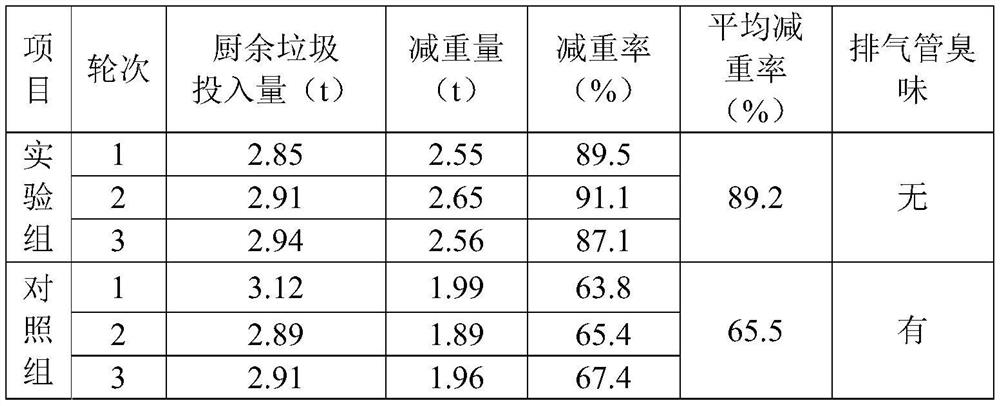Efficient kitchen garbage degradation compound microbial agent as well as preparation method and application thereof
A technology of compound microbial bacterial agent and degrading bacteria, which is applied in the direction of microorganism-based methods, biochemical equipment and methods, microorganisms, etc., can solve the problems of organic matter loss environment, low microbial activity, and ineffective function, so as to reduce the degradation cycle , improve the decomposing rate, and realize the effect of resource utilization
- Summary
- Abstract
- Description
- Claims
- Application Information
AI Technical Summary
Problems solved by technology
Method used
Image
Examples
Embodiment 1
[0035] Example 1 Isolation and identification of bacterial species
[0036] In the present embodiment, bacterial species separation and identification are carried out from the soil of Jinhua Shuanglongdong Scenic Spot and the cow dung heap of Jinhua Jiufeng Ranch, and the details are as follows:
[0037] (1) Isolation and identification of starch degrading bacteria
[0038] Take 0.5 g of soil sample or fecal sample, add 49.5 mL of distilled water, put it into a 250 mL conical flask with an appropriate amount of glass beads, and shake at 200 rpm for 1 h to obtain a sample solution.
[0039] After gradient dilution of the sample solution, 100 μL of the diluted solution was spread on starch agar medium. After culturing at 37 °C for 48 hours, an appropriate amount of iodine solution was added to the plate, and colonies with larger transparent circles were picked for purification and culture, and stored in -80 °C glycerol tubes. , and sent the obtained pure culture to Beijing Qing...
Embodiment 2
[0059] Embodiment 2 Bacterial species antagonism test
[0060] Bacillus velesi, Bacillus cereus, Bacillus highlandis, Bacillus subtilis and Bacillus amyloliquefaciens isolated and preserved in Example 1 were cultured in pairs on LB broth agar medium, and at the intersection point Observe the growth of bacteria. After testing, there is no mutual antagonism among the five kinds of bacteria on the surface of the medium, and it can be used for the preparation of the compound bacterial agent.
Embodiment 3
[0061] The preparation of embodiment 3 spore fermentation liquid
[0062] (1) slant culture: Bacillus velesi, Bacillus cereus, Bacillus highlandi, Bacillus subtilis and Bacillus amyloliquefaciens isolated and preserved in Example 1 were inoculated on the LB broth agar medium slant, respectively, 37 Activated by incubation for 24h.
[0063] (2) Seed liquid culture: inoculate Bacillus velesi, Bacillus cereus, Bacillus highlandi, Bacillus subtilis and Bacillus amyloliquefaciens activated in step (1) in LB broth liquid medium respectively, at 37°C , 200rpm shaker shaking culture for 24h, respectively, to obtain the seed liquid of the above-mentioned five kinds of bacteria.
[0064] (3) spore-producing fermentation culture: inoculate the seed liquids of Bacillus velesi, Bacillus cereus, Bacillus highlandis, Bacillus subtilis and Bacillus amyloliquefaciens obtained in step (2) respectively in an improved spore-producing fermentation medium (glucose 25g / L, soy peptone 15g / L, corn s...
PUM
 Login to View More
Login to View More Abstract
Description
Claims
Application Information
 Login to View More
Login to View More - R&D
- Intellectual Property
- Life Sciences
- Materials
- Tech Scout
- Unparalleled Data Quality
- Higher Quality Content
- 60% Fewer Hallucinations
Browse by: Latest US Patents, China's latest patents, Technical Efficacy Thesaurus, Application Domain, Technology Topic, Popular Technical Reports.
© 2025 PatSnap. All rights reserved.Legal|Privacy policy|Modern Slavery Act Transparency Statement|Sitemap|About US| Contact US: help@patsnap.com

